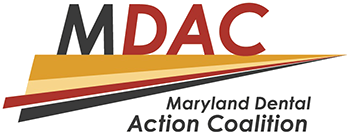Oral health programs in Maryland provide many health benefits to the state’s residents, however more can be done to help residents prevent oral diseases and injuries. Preventive oral health care and highly effective population-based solutions, such as community water fluoridation, should be available to everyone in the state. Prevention will also be enhanced if Maryland improves its oral health surveillance systems.
The 2011-2015 MOHP established the regular assessment of the oral health status of vulnerable Maryland populations and the increased use and adoption of best practices to prevent oral disease and injury, and ensures that communities have access to oral disease and injury prevention programs. The updated goals and actions below were developed to leverage the previously established assessments and processes in order to provide data and establish trends on prevention that inform policy making and program planning, give providers tools to communicate more effectively with patients, and expand community prevention services.
GOAL ONE: Use data to advance optimal oral health for all Marylanders.
- Action One: Review key health surveillance data on an ongoing basis to identify new opportunities for partnership and action.
- Action Two: Review key delivery-systems surveillance data on an on-going basis to identify opportunities for partnership and action.
GOAL TWO: Improve public awareness of oral disease and injury prevention.
- Action One: Provide health professionals with tools to help them communicate clearly with their patients, clients, and the public about oral disease and injury prevention. Where needed, help health professionals locate and use resources and training to make communication more comfortable and effective.
- Action Two: Partner with schools, religious and charitable organizations, social service organizations, and community groups to take health information “outside the clinic” and spread the word more widely through trusted sources.
- Action Three: Continue and expand health information marketing targeted to people at high risk for oral disease and injury.
GOAL THREE: Promote community-based oral disease and injury prevention programs.
- Action One: Increase public access to fluoride through water fluoridation or fluoride varnish programs.
- Action Two: Increase the number of school-based dental screening and sealant programs.
- Action Three: Increase the number of community programs with a formal oral health care component.
- Action Four: Promote and share information about on-going prevention programs such as the mouthguard and Mid-Atlantic P.A.N.D.A. programs.
